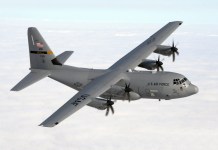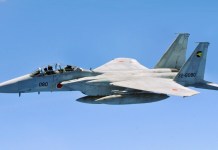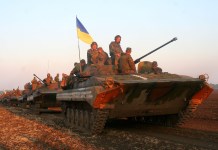Ukraine’s allies are assembling in London on Friday, with President Volodymyr Zelensky and British Prime Minister Keir Starmer pushing for more long-range missiles to be delivered to Kyiv.
They are just one part of a rapidly developing arsenal being deployed on both sides of the front line, as the three-and-a-half-year war has reshaped the tools of modern warfare.
Here are the main weapons used throughout the conflict, as both sides have moved to develop cheaper, more agile arms, such as drones, in a bid to gain the upper hand.
Drones, fired by the hundreds every day by both sides, have become the deadliest weapon of the conflict, reshaping the battlefield and forcing soldiers underground for protection.
On the front line, drones can detect troop movements, prowl skies deep behind enemy lines, or guide artillery strikes.
The small FPV (first-person view) devices are remotely piloted and can be equipped with shells and grenades.
The technology is constantly evolving, including the use of artificial intelligence and fibre-optic drones, tethered by cables up to 40 kilometres long to prevent them from being wirelessly jammed.
Both sides also use larger attack drones capable of carrying explosives, particularly to strike infrastructure far from the front lines and at low cost.
On the Russian side, these include Geran drones, based on Iranian Shaheds, and Lancet drones, fired regularly at Ukraine in large numbers.
Ukraine, for its part, has been relying on Turkish-made Bayraktar drones and a variety of locally produced or Western-made models.
Close to the front, key roads have been covered in anti-drone netting, while Russia has also draped huge nets over some energy sites, heavily targeted by Ukraine.
Iskander vs Patriot
Much more expensive, missiles are typically used to strike strategic targets once drones have overwhelmed air defence capabilities.
Russia dominates in this sector with an arsenal composed of cruise missiles that fly on a quasi-horizontal trajectory (Kh-101, Kalibr), ballistic missiles, which follow a curved trajectory (Iskander) and hypersonic missiles, capable of flying at extreme speed and changing trajectory in-flight (Kinzhal).
In November 2024, Moscow fired for the first time an experimental missile, dubbed Oreshnik, capable of carrying multiple nuclear warheads, at a military factory in central Ukraine.
Ukraine, meanwhile, has a limited number of missiles supplied by its allies: the British Storm Shadow and French SCALP, as well as the American ATACMS and HIMARS. They, however, lack the range of Russian missiles that can fly hundreds or thousands of kilometres.
Kyiv has been pushing to receive Tomahawk cruise missiles from Washington, which would enable deeper strikes, though it has so far been rebuffed by President Donald Trump.
It also aims to mass-produce its own missile, called Flamingo.
To protect their skies, both countries heavily rely on air defence systems.
Ukraine has been using modern American Patriot or European IRIS-T, NASAMS, and SAMP/T batteries supported by mobile brigades. Russia bets on S-400/S-300, Buk, Tor, and Pantsir batteries.
In 2024, Ukraine received F-16 fighter jets from the West to help repel Russian attacks. At least four of them have since been lost in action, Kyiv said.
Decline Of Armoured Vehicles
Tanks and armoured vehicles — key elements of the battlefield at the start of the war — have become much less prominent on the front line, deemed too expensive and too vulnerable to attacks from cheap drones.
Russian forces have lost many T-90, T-80, and T-72 tanks in their assault, according to open-source counts.
Ukraine, which received Western Leopard, Challenger, and Abrams tanks for its major counter-offensive in 2023, encountered Russian defences that proved impenetrable.
Some units on both sides now turn to motorcycles for transportation.
Others have modified their vehicles to make them more durable, many of which resemble props from the “Mad Max” post-apocalyptic film franchise.
Artillery has also been used extensively on the front, with a 2024 European estimate putting the number of shells fired by Russia’s army alone at 10,000 — or one tenth of France’s annual production capacity.
Zelensky said in August that Russia was firing almost 2.5 times as much artillery as his forces.
© Agence France-Presse




